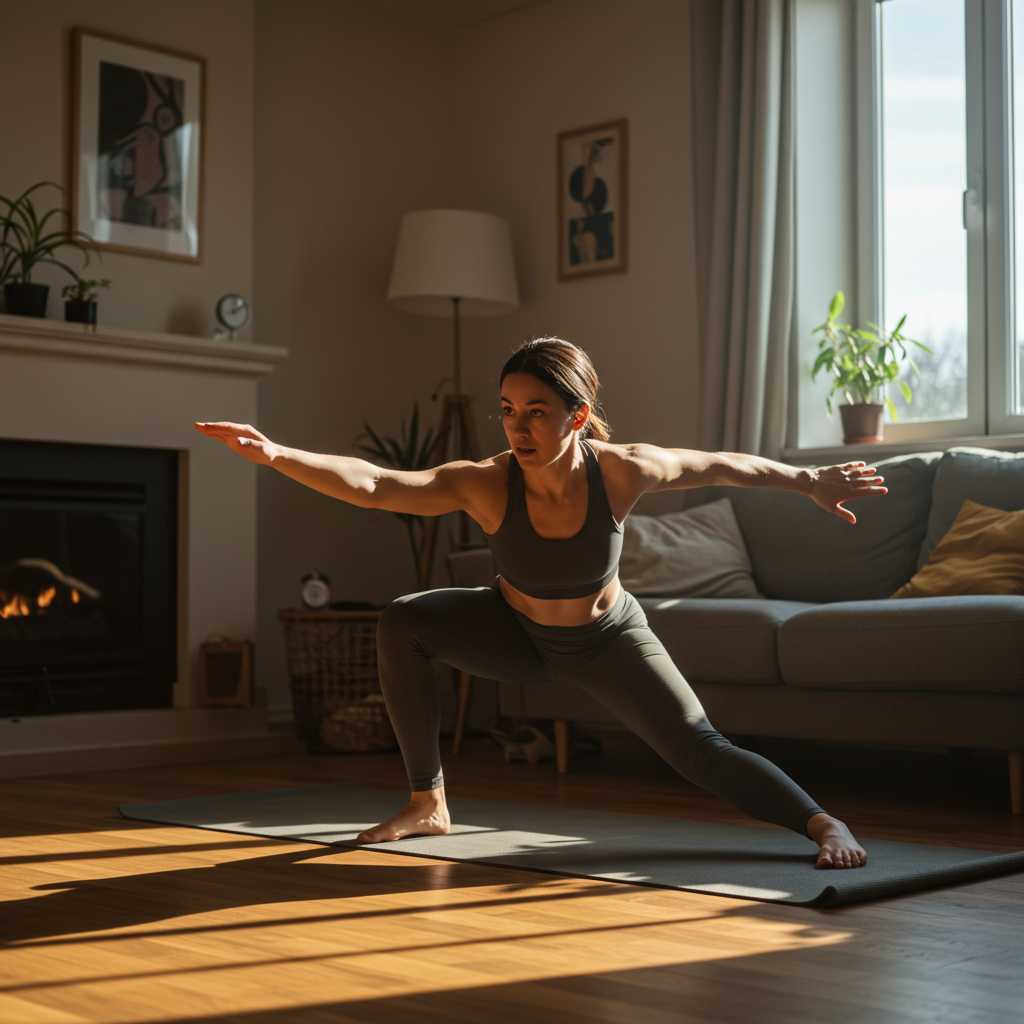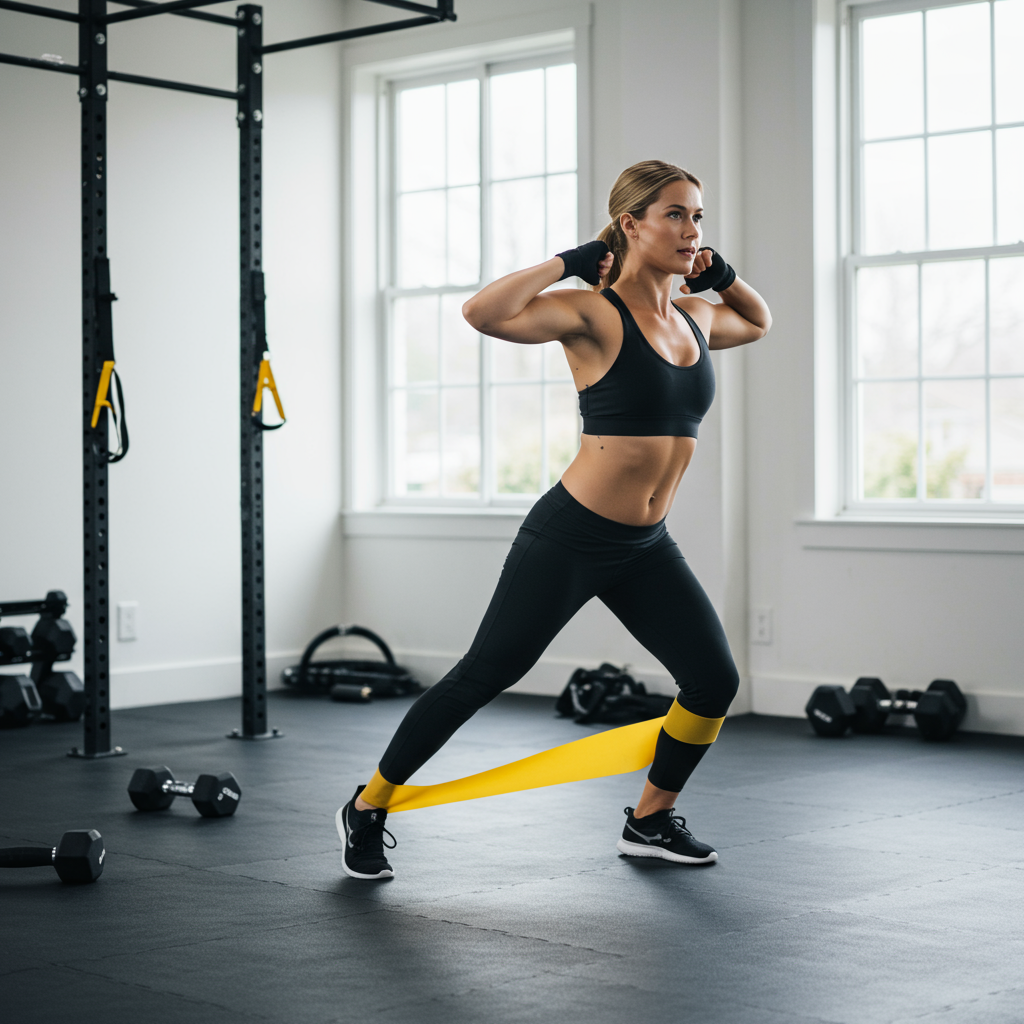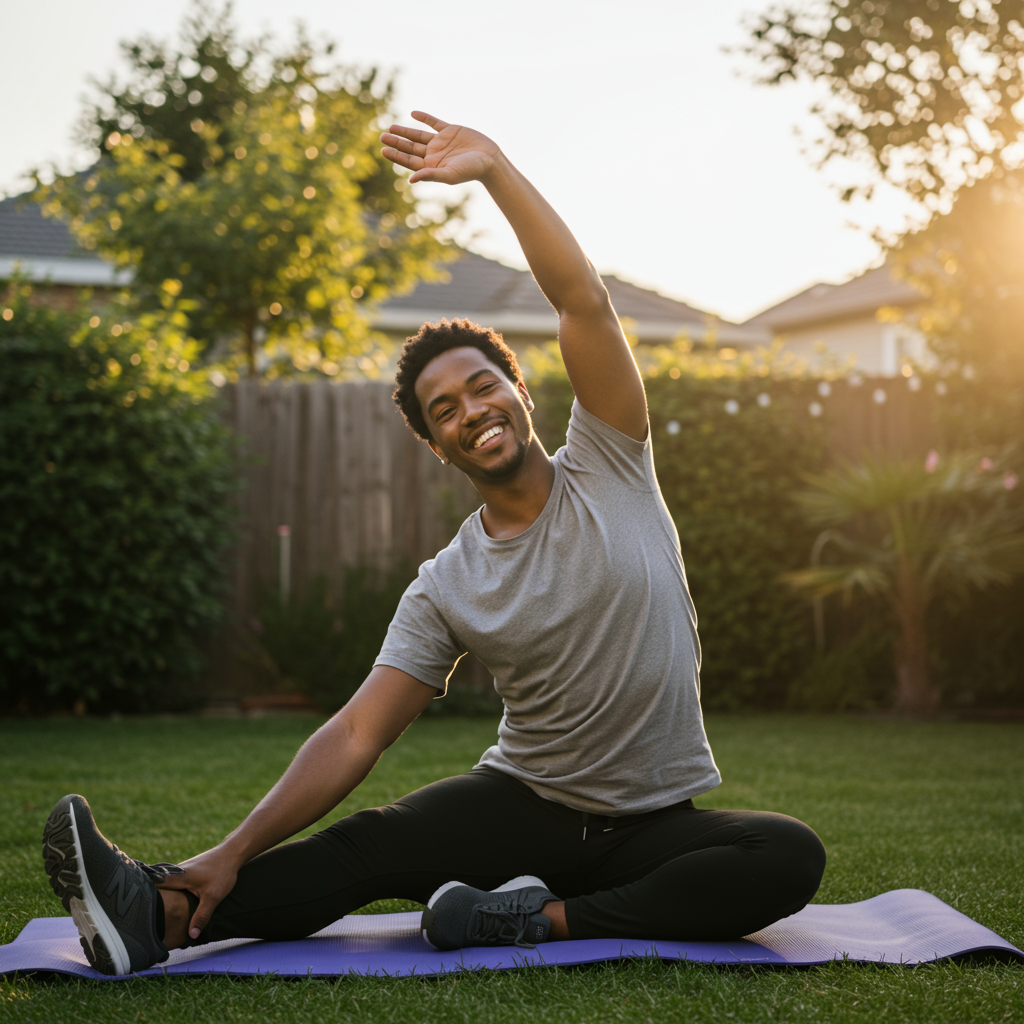
Table of Contents
Introduction
Are you looking for a way to stay fit without the hassles of a gym membership or long commutes? Home workout plans have surged in popularity as flexible, convenient solutions for people of all fitness levels. Whether your goal is to lose weight, build strength, or simply maintain a healthy routine, working out at home offers unique advantages that fit easily into even the busiest schedules.
In recent years, the accessibility of home workouts has transformed how individuals approach fitness. According to a survey, over 70% of fitness enthusiasts now prefer exercising at home due to its convenience and time-saving benefits. Imagine waking up in the morning and having your workout space just steps away, ready when you are. This eliminates barriers like driving to a gym or waiting for equipment, making it easier to stay consistent and motivated.
The ability to customize workouts to your preferences and goals creates an empowering fitness experience. From bodyweight exercises requiring no equipment to using dumbbells, bands, or fitness apps, there is a home workout plan suitable for everyone. Many people appreciate how home workouts can be adapted to any skill level, fitness objective, or available time, without sacrificing quality or results.
Concerns about cost also drive interest in home fitness. Gym memberships and classes can be expensive and sometimes intimidating. In contrast, home-based fitness regimens offer cost-effective options with minimal to moderate equipment investments. You can create a workout routine that fits your budget perfectly while still targeting your health and wellness goals effectively.
What You’ll Learn in This Guide
This comprehensive guide will walk you through everything you need to know about setting up successful home workout plans. Whether you are a beginner or looking to revamp your routine, here’s what to expect:
- Benefits of Home Workouts: Explore why exercising at home is a popular choice including convenience, cost savings, and flexible scheduling that adapts to your lifestyle.
- Types of Home Workouts: Learn about strength training, cardio, and flexibility exercises ideal for home settings, complete with examples to get you started confidently.
- Creating Your Own Plan: Discover practical steps to design a personalized workout schedule tailored to your goals, time, and space availability to maximize consistency and effectiveness.
- Essential Equipment and Motivation Tips: Get insights into useful tools from basic resistance bands to optional gear that enhance your training, plus expert tips to stay motivated and on track.
The upcoming sections will dive deeper into each of these areas with detailed explanations, actionable advice, and resourceful tips to help you create a rewarding home fitness journey. With proper guidance, you can turn any space into your personal gym — no matter your fitness level.
By understanding different workout types and how to blend them effectively, you’ll build balance, strength, and endurance tailored to your needs. We will also cover how simple equipment can amplify your results without overwhelming your space or budget.
Additionally, motivation is key to long-term success, so you’ll find helpful strategies to set realistic goals, carve out dedicated workout spaces, and track progress effectively. This holistic approach aims to make fitness enjoyable, sustainable, and accessible on your terms.

Building upon the introduction to home workout plans, it is essential to dive deeper into the benefits and practical aspects to fully appreciate how exercising at home can transform your fitness journey. Home workouts have surged in popularity due to their adaptability to individual schedules and the elimination of many common barriers associated with gym memberships or outdoor activities. Understanding the types of workouts available and how to design a personalized routine will empower you to maximize results. This discussion section explores key categories of home workouts and offers guidance on creating effective plans tailored to your goals and lifestyle.
Types of Home Workouts to Suit Every Fitness Goal
Home workouts come in a diverse range of styles to cater to different preferences, equipment availability, and fitness objectives. Whether your goal is to build strength, improve cardiovascular health, or increase flexibility, there are exercises and routines you can do right from the comfort of your living room or any space you designate. Bodyweight exercises such as push-ups, squats, and planks provide excellent strength-building opportunities without any equipment, making them accessible to beginners and advanced fitness enthusiasts alike. For those who prefer added resistance, dumbbells and resistance bands are excellent tools that can increase muscle engagement and promote growth.
Cardio workouts at home range from high-intensity interval training (HIIT), which alternates between intense bursts and recovery periods, to more rhythmic activities like jump rope, indoor jogging, or dancing. These workouts efficiently elevate your heart rate, boost endurance, and support weight management. Additionally, incorporating flexibility and mobility work such as yoga stretches, Pilates basics, and dynamic warm-up routines helps improve range of motion and prevent injuries. Combining these workout types in your plan ensures a balanced fitness regimen that addresses strength, cardiovascular health, and flexibility.
Key Aspects of Home Workout Types
Understanding the fundamental elements of each workout type provides a foundation to tailor your fitness routine effectively:
- Strength Training with Bodyweight and Equipment: Bodyweight workouts are versatile and can be modified to increase difficulty. For example, progressing from standard push-ups to incline or decline variations challenges different muscle groups. Incorporating resistance bands or dumbbells enhances muscle activation and offers progressive overload, crucial for muscle development.
- Cardiovascular Fitness through Dynamic Movements: High-intensity interval training combines bursts of intense exercise with short recovery, improving both aerobic and anaerobic capacity. Jump rope and dancing are fun, low-cost options that increase calorie burn and improve coordination, making cardio workouts engaging and efficient.
- Flexibility and Joint Mobility Practices: Yoga and Pilates not only increase flexibility but also promote mind-body connection and improve posture. Dynamic warm-ups prepare muscles for activity and reduce injury risk. Integrating these exercises enhances overall mobility and recovery.
- Adaptability to Space and Equipment Constraints: Home workouts accommodate various environments—from small apartments to larger rooms. Equipment is optional but helpful; many effective routines require minimal or no equipment, making fitness accessible regardless of resources.
How to Create Your Own Personalized Home Workout Plan
Crafting a personalized workout plan at home begins with a clear understanding of your fitness goals, current physical condition, and available resources. Goal setting is the cornerstone of effective planning. Whether you aim to build muscle, lose weight, or improve flexibility, defining specific, measurable objectives guides your exercise selection and progress tracking. Assessing your schedule is equally important to ensure your plan is realistic and sustainable, helping you maintain consistency over time. A successful home workout plan blends variety and progression to keep your routine stimulating and effective.
Start by choosing workout types that align with your goals—strength, cardio, flexibility, or a combination. Structure your weekly schedule balancing workout intensities and rest days to support recovery. For beginners, shorter sessions with focus on form build a solid foundation, while advanced exercisers can incorporate longer, more challenging routines. Tracking progress through apps, journals, or simple notes motivates adherence and lets you celebrate milestones. Remember, creating a dedicated, organized workout space enhances motivation and minimizes distractions, setting you up for consistent success.
Important Considerations for Designing Your Plan
Several factors influence the effectiveness and sustainability of your home workout plan. Attention to these elements ensures a safe and rewarding fitness experience:
- Set Clear and Realistic Goals: Define achievable milestones such as increasing reps, duration, or weight lifted. Realistic goals prevent discouragement and promote gradual progress, solidifying healthy habits and positive mindset.
- Incorporate Variety and Progression: Rotate exercises and increase intensity over time to challenge your body and avoid plateaus. Changing workout types maintains interest and targets all major muscle groups comprehensively.
- Allocate Consistent Time and Space: Dedicate a particular area in your home as your workout zone. Keeping it organized and inviting enhances your commitment and reduces setup time, making exercise a seamless part of your daily routine.
- Prioritize Recovery and Rest: Schedule rest days and incorporate gentle stretching or mobility work to aid muscle recovery and prevent burnout. Listening to your body helps sustain long-term fitness and minimizes injury risk.

Conclusion
Embarking on a journey with home workout plans opens up a world of fitness possibilities that are not only convenient but also highly adaptable to your unique lifestyle. In this guide, we’ve explored the multifaceted benefits of exercising at home—from eliminating the commute and saving on costly gym fees to gaining the freedom to tailor workouts to your specific goals and needs. Home workouts provide a versatile approach to improving physical strength, cardiovascular health, and flexibility without requiring elaborate equipment or large spaces. This adaptability makes fitness accessible, sustainable, and enjoyable regardless of your experience level or schedule.
We’ve highlighted various types of home workouts that suit different preferences and objectives, including bodyweight strength exercises, cardio routines like jump rope and HIIT, and flexibility-enhancing practices such as yoga and Pilates. Equally important, we’ve discussed how to build your own personalized workout plan that fits your goals, time, and available equipment, along with tips on assembling essential home fitness gear like resistance bands, dumbbells, and yoga mats. Staying motivated at home is achievable by setting realistic goals, creating a pleasant workout space, and tracking your progress to celebrate each milestone, which keeps your enthusiasm fueled over the long haul.
By embracing a balanced mix of strength, cardio, and flexibility exercises, you promote overall health, boost your confidence, and enjoy mental clarity—all from the comfort of your home. This holistic fitness approach empowers you to make consistent progress, even on busy days, and transforms exercise from a chore into a fulfilling habit.
Actionable Next Steps
Ready to begin or enhance your home workout journey? Start by assessing your fitness goals and the space you have available. Choose a combination of workout types that excite you, whether that’s strength training, cardio, or flexibility routines, and create a weekly schedule that fits seamlessly into your lifestyle—keeping sessions achievable and progressively challenging to avoid burnout. Equip your workout area with basic tools, such as a yoga mat and resistance bands, which offer a wide range of exercise options without taking up much space or money.
To maintain momentum, set measurable milestones and track your workouts through apps or journals. Designate a dedicated workout area that feels inviting and motivates you to stick with your plan. Most importantly, be patient with yourself, celebrate small victories, and adjust as you go to keep your routine fresh and effective. Starting with small, sustainable steps ensures long-term success and a positive fitness experience at home.
Closing Statement
Taking charge of your fitness through home workout plans is a powerful step toward improved health, confidence, and well-being. No matter your starting point, the flexibility and accessibility of home fitness allow you to progress at your own pace and customize every aspect to suit your preferences. Remember, the journey to fitness is personal and rewarding—embrace it with consistency and joy. For further inspiration and guidance, keep exploring different exercises and gradually expand your routine to enjoy a healthier, happier lifestyle every day.
Frequently Asked Questions
-
How much space do I need for home workouts?
- Most workouts require a small area, around 5×5 feet, but it depends on the exercise types and equipment used.
-
Do I need equipment to start working out at home?
- No, many effective exercises use bodyweight only, but some basic equipment can enhance results and variety.
-
How often should I workout at home?
- Aim for at least 3-5 days per week to see balanced improvements in strength, endurance, and flexibility.
-
Can home workouts help with weight loss?
- Yes, consistent cardio and strength training combined with proper nutrition support effective weight loss.
-
What if I have an injury?
- Consult a healthcare professional before starting or modifying any workout plan to ensure safety and proper guidance.
